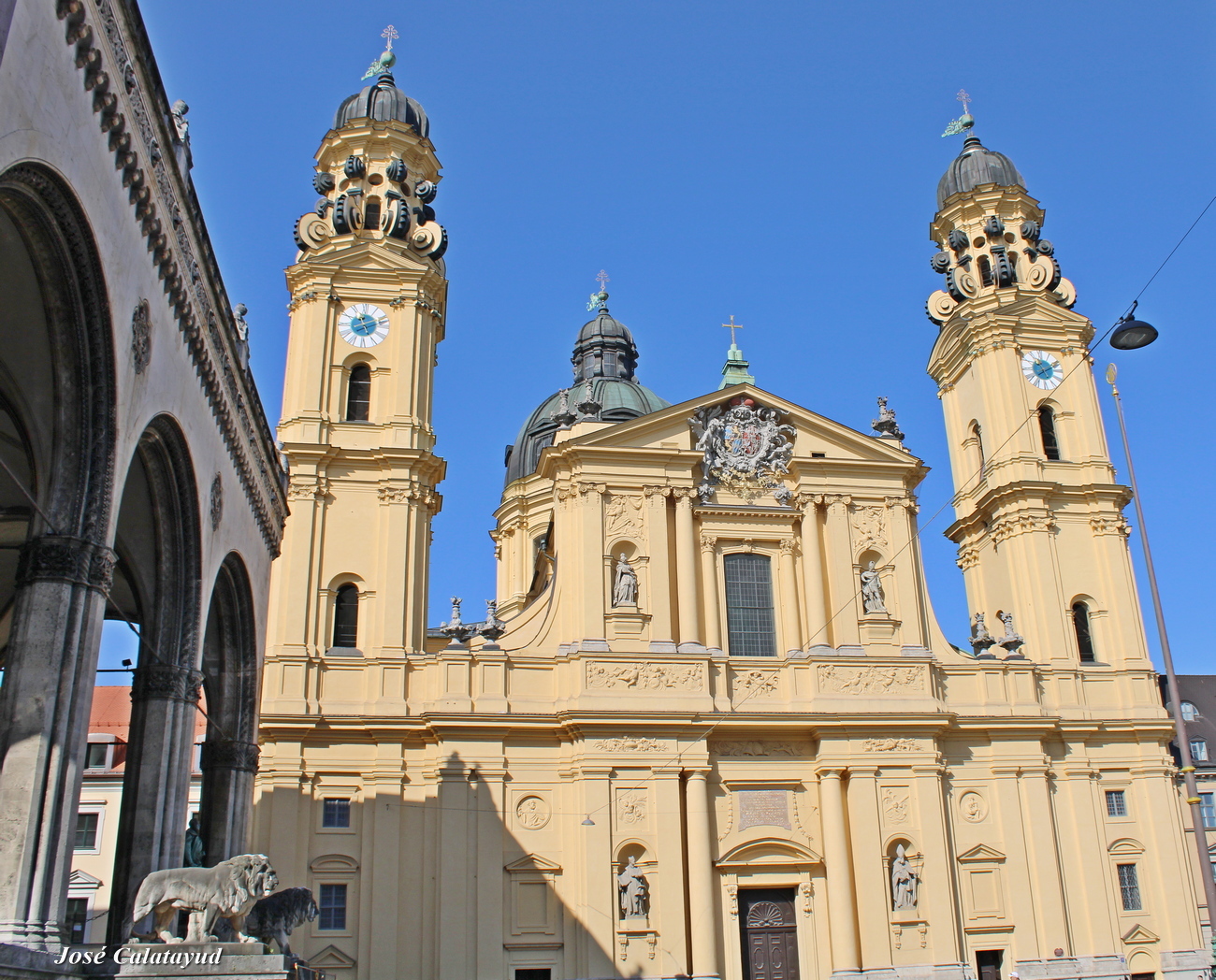The Theatinerkirche, located on Odeonsplatz in Munich, is a Baroque masterpiece and one of the city’s most iconic landmarks. Built between 1663 and 1690 under the rule of Elector Ferdinand Maria of Bavaria to celebrate the birth of his heir, it was initially designed by Italian architect Agostino Barelli and later completed by Enrico Zuccalli and Giovanni Viscardi. Its ochre façade and distinctive twin domes, inspired by Rome’s Sant'Andrea della Valle basilica, make it a defining feature of Munich’s skyline. The interior, lavishly adorned with white stucco and gold accents, contrasts with the restrained exterior, creating an atmosphere of both elegance and solemnity.
Dedicated to the Theatine Order, the church blends Italian Baroque elements with Bavarian influences. Its high altar, carved by Andreas Faistenberger, and the ceiling frescoes by Johann Baptist Zimmermann add to its grandeur. The crypt houses the tombs of several members of the Wittelsbach dynasty. Thanks to its central location near the Munich Residenz and the Hofgarten, the Theatinerkirche is not only a place of worship but also a historical monument and a symbol of Bavaria’s Catholic identity, attracting both worshippers and lovers of art and history.
Sources: Deepseek & Wikipedia




 English
English